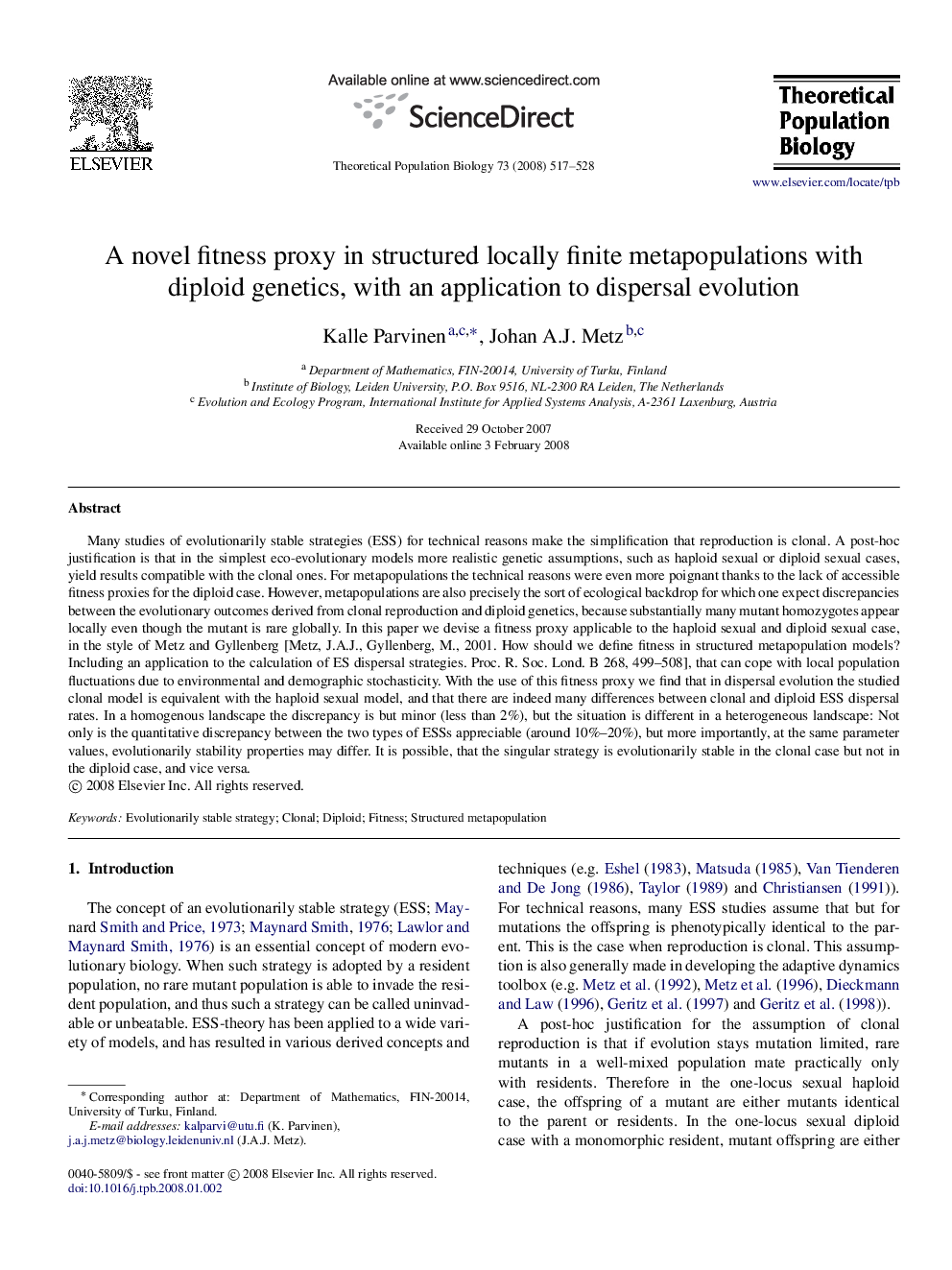| کد مقاله | کد نشریه | سال انتشار | مقاله انگلیسی | نسخه تمام متن |
|---|---|---|---|---|
| 4502722 | 1320595 | 2008 | 12 صفحه PDF | دانلود رایگان |

Many studies of evolutionarily stable strategies (ESS) for technical reasons make the simplification that reproduction is clonal. A post-hoc justification is that in the simplest eco-evolutionary models more realistic genetic assumptions, such as haploid sexual or diploid sexual cases, yield results compatible with the clonal ones. For metapopulations the technical reasons were even more poignant thanks to the lack of accessible fitness proxies for the diploid case. However, metapopulations are also precisely the sort of ecological backdrop for which one expect discrepancies between the evolutionary outcomes derived from clonal reproduction and diploid genetics, because substantially many mutant homozygotes appear locally even though the mutant is rare globally. In this paper we devise a fitness proxy applicable to the haploid sexual and diploid sexual case, in the style of Metz and Gyllenberg [Metz, J.A.J., Gyllenberg, M., 2001. How should we define fitness in structured metapopulation models? Including an application to the calculation of ES dispersal strategies. Proc. R. Soc. Lond. B 268, 499–508], that can cope with local population fluctuations due to environmental and demographic stochasticity. With the use of this fitness proxy we find that in dispersal evolution the studied clonal model is equivalent with the haploid sexual model, and that there are indeed many differences between clonal and diploid ESS dispersal rates. In a homogenous landscape the discrepancy is but minor (less than 2%), but the situation is different in a heterogeneous landscape: Not only is the quantitative discrepancy between the two types of ESSs appreciable (around 10%–20%), but more importantly, at the same parameter values, evolutionarily stability properties may differ. It is possible, that the singular strategy is evolutionarily stable in the clonal case but not in the diploid case, and vice versa.
Journal: Theoretical Population Biology - Volume 73, Issue 4, June 2008, Pages 517–528